Knowing when is the best time to see the Milky Way is key for planning your Milky Way photography sessions and for increasing your chances of success seeing and shooting our galaxy.
Generally speaking, the best time to see the Milky Way is during the Milky Way season, which goes from February to October, usually between 00:00 and 5:00, and on nights with a new moon. This, however, will vary depending on the hemisphere, your latitude, and other factors like the moon phase.
The position of the Milky Way in the sky is also another important factor to consider in Milky Way photography, and this also changes depending on the location.
Throughout this article, we’ll dive into all the details to know when is the best time of year to see the Milky Way in the Northern and Southern Hemispheres, when is the best time of day, and when is the best time of year to photograph the Milky Way according to its position in the sky.
But first, to check at a glance the best days of the year to see the Milky Way, you can download our 2024 Milky Way Calendar according to your location. I’ll explain how this Milky Way chart works below.
Content
- Milky Way season – When can you see the Milky Way
- Best time to see the Milky Way in the Northern Hemisphere
- Best time to see the Milky Way in the Southern Hemisphere
- Best time of night to see the Milky Way
- 2024 Milky Way Calendar
- Best time of year to photograph the Milky Way
GET THE CALENDAR WITH THE BEST DATES TO PHOTOGRAPH THE MILKY WAY IN 2024
You'll also receive our PDF guide to photographing the Milky Way!
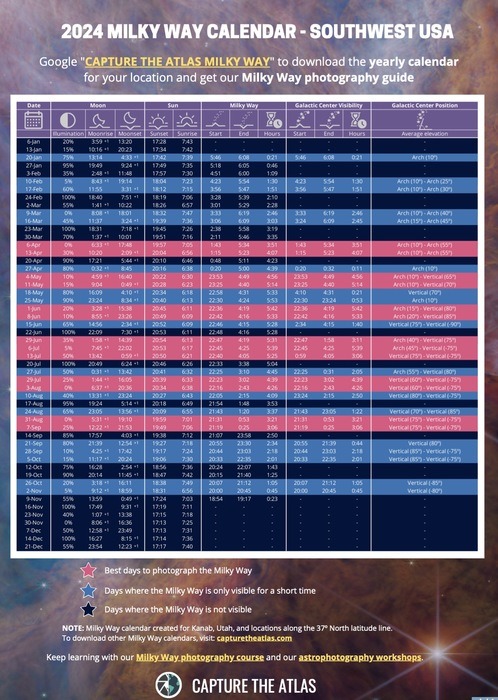
Milky Way season – When can you see the Milky Way?
The Milky Way is visible throughout the year all around the world. However, “Milky Way season,” as it’s popularly known, is the time when the most spectacular region of our galaxy, the Galactic Center or “Galactic Bulge,” is visible in the sky.
You can still see our galaxy in the Milky Way off-season but bear in mind that, in this article, we’ll be talking about the best time to see the Milky Way when the Galactic Center is visible in the sky.
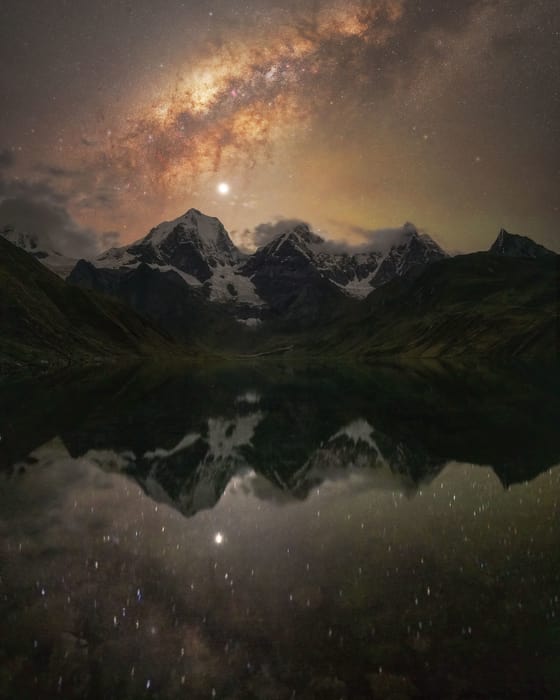
The Galactic Center of the Milky Way is technically known as “Galactic Bulge.” Milky Way in the Peruvian Andes.
You can see the Milky Way on clear nights with a new moon during the Milky Way season. However, when you can see the Milky Way depends on many factors, your latitude being the most important one, and what you should consider first.
*Note: You can check other important factors like light pollution in our article on the best places to see the Milky Way.
Below, you’ll find a breakdown of the best time to see the Milky Way on different latitudes and regions of our planet.
Best time to see the Milky Way in the Northern Hemisphere
Since most of the population lives in the Northern Hemisphere, here we find the most popular areas to see and photograph the Milky Way.
In general, the best time to see the Milky Way in the Northern Hemisphere is from March to September, while the Milky way season goes from February to October.
This region of our planet includes territories at very different latitudes, which is the main factor to consider when planning when to see the Milky Way. For this reason, the best time of year to see the Milky Way in the UK is completely different from the best time to see the Milky Way in the Canary Islands, Spain (the further south you go, the longer the Milky Way season).
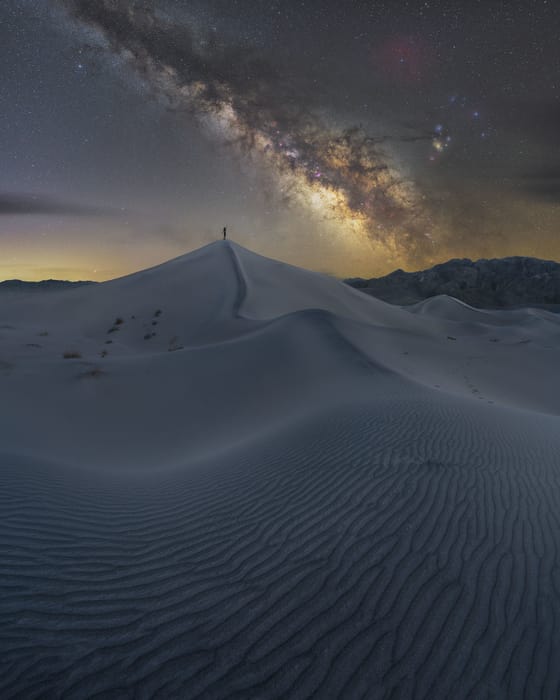
Image taken in Death Valley, USA, at the beginning of the Milky Way season in March
Below, you’ll find the best time of year to see the Milky Way in the Northern Hemisphere depending on your location.
Best time to see the Milky Way in North America
The best time to see the Milky Way in North America depends on your latitude:
- In Southern latitudes like the Southern states of the US or Mexico, the best time of year to see the Milky Way is from late March to late September, while the Milky Way season goes from early February to late October.
- In higher latitudes like most of the contiguous states of the US, the best time to see the Milky Way is from late March to late August, while the Milky Way season goes from late February to early October.
- In Northern latitudes like Canada, the best time to see the Milky Way is from Mid-March to Mid-May, whereas the Milky Way season goes from late February to late September with a break during the summer when there is no darkness.
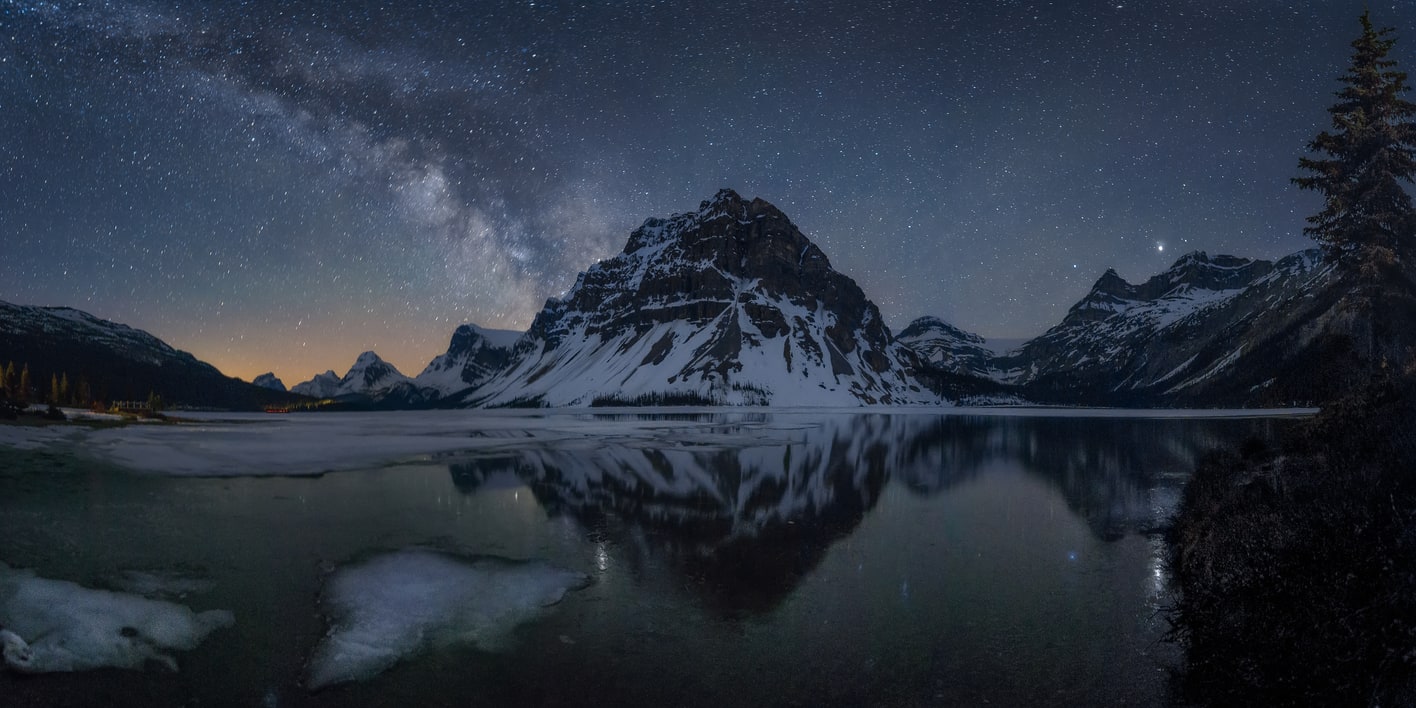
Milky Way in Canada during the Canadian Milky Way season in May – Alberta
Best time of year to see the Milky Way in the UK
The UK is located at a considerably high latitude, so the timeframe for seeing the Milky Way is shorter compared to other regions in the Northern Hemisphere.
The best time of year to see the Milky Way in the UK is from Mid-March to Mid-May. However, the Milky Way can be visible for shorter periods of time through the UK Milky Way season from late February to late September.
Remember that, in high latitudes, there is no darkness during the summer, so you won’t be able to see the Milky Way in the UK during June and July.

Milky Way in the UK (Durdle Door) during the UK Milky Way season (Photo by Matty Whitton)
When to see the Milky Way in Southern Europe
In Southern Europe, we can find countries like Spain, Portugal, Italy, and Greece, which are usually the best places to see the Milky Way in Europe, considering the longer Milky Way season.
The best time of year to see the Milky Way in Southern Europe is from late March to late August, with the Milky Way season going from late February to late September.
Best time to see the Milky Way in the Southern Hemisphere
Fewer people live in the Southern Hemisphere, but those who live there can enjoy better conditions with a longer Milky Way season and more areas away from light pollution.
Broadly speaking, the best time of year to see the Milky Way in the Southern Hemisphere is from late February to late October, while the Milky Way season goes from late January to late November.
best time to see the milky way in Australia
Australia is one of the most popular places to see the Milky Way in the Southern Hemisphere and one of the best places in the world for Milky Way photography.
The best time of year to see the Milky Way in Australia is from late February to late October. However, you can also shoot the galaxy during the Australian Milky Way season from late January to late November.
Best time of night to see the Milky Way
Once you know the best time of year, it’s time to check which is the best time of day to see the Milky Way.
Generally, the best time of day to see the Milky Way is between 00:00 and 5:00 on nights with a new moon during the Milky Way season.
However, even if you plan your session during the Milky Way season, there are other factors to consider that will be crucial to see the Milky Way, like the Milky Way visibility, the moon phase, and the sunrise/sunset.
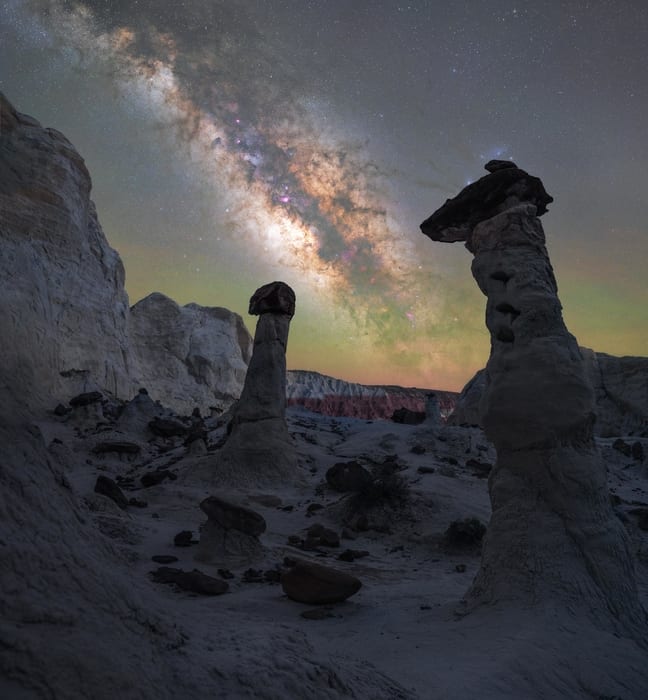
Always plan to see the Milky Way according to the sunrise/sunset, the moon phase, and the Milky Way visibility.
Sunrise/Sunset
Darkness is the first key element you need to see the Milky Way. This means that the best time of day to see the Milky Way will always be in the timeframe between sunset and sunrise.
This doesn’t mean that as soon as the sun goes down, you can see the Milky Way. Even if it’s in the sky, the Milky Way will be barely visible during blue hour, so you’ll have to wait at least until the end of the astronomical twilight to see all the details of the Milky Way.

Blue hour Milky Way taken during the Astronomical twilight – Banff, Canada
You can quickly check the sunrise and sunset time at your location here.
Moon Phase
The moonlight is the other key factor in finding the best time of night to see the Milky Way.
Checking this is very easy:
- Moon phase: While the moon can sometimes help illuminate the landscape, too much light coming from the moon will drastically reduce the Milky Way visibility. For me, 30% + of illumination coming from the moon is usually too much to see the Milky Way.
- Moonrise/Moonset: Even if there’s a full moon, this won’t affect your Milky Way visibility when this is below the horizon. When the light source coming from the moon is too harsh, don’t forget to check the time when the moon rises and sets.
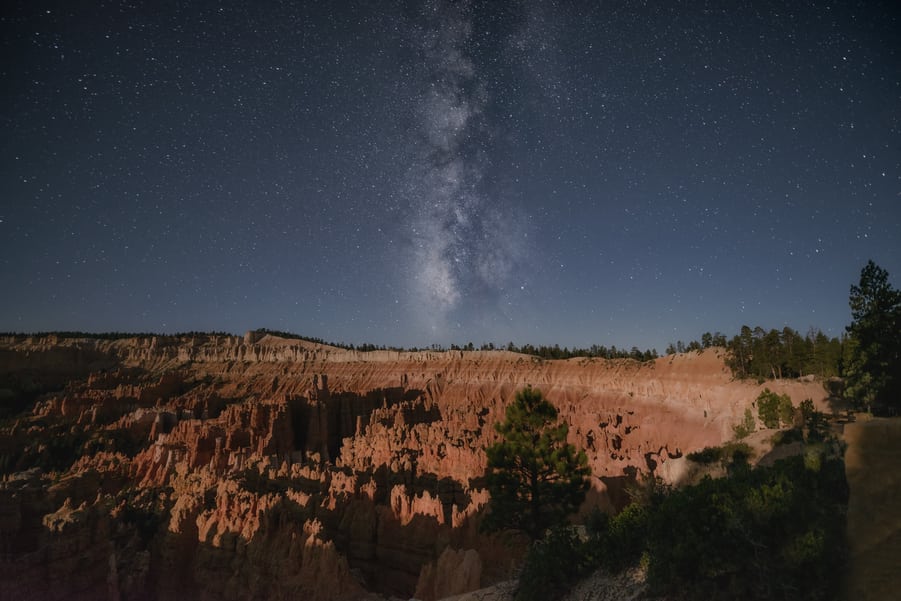
Milky Way taken during a rising crescent moon. Utah, USA
You can check the moon phase in your location in a Moon Light world map like this.
Milky Way visibility
If you’re trying to see the Milky Way at night and with no moon or a new/crescent moon, the last factor to consider is the Milky Way visibility. The same as other astronomical objects, our galaxy is visible for a period of time in the sky that will change depending on the latitude and the season.
In most areas of our planet:
- From November to January: The Galactic Center of the Milky Way is not visible at all
- From February to June: The Milky Way is visible in the early morning
- From July to August: The Milky Way is visible during the middle of the night
- From September to October: The Milky Way is visible in the evening
The best way to check this is by using a Milky Way app like Photopills, where you can see the best hours to see the Milky Way at night according to your time and location.
Milky Way calendar with the best days to see the Milky Way
Milky Way planning can be overwhelming. For that reason, I create Milky Way viewing calendars every year, where you can see at a glance the best time of the year to see the Milky Way according to your location.
In this 2024 Milky Way Calendar, you’ll find:
- Milky Way hours
- Milky Way visibility
- Moon phase
- Moonrise and moonset
- Sunrise and sunset
- The angle between the Milky Way and the horizon
- Best days to see the Milky Way in 2024
Below you can check a video to learn how to use our Milky Way Calendars:
As you’ve seen throughout the article, the best time to see the Milky Way depends, to a great extent, on your location. For that reason, we always create Milky Way calendars for 23 different regions around the world, such as the United States, the UK, Canada, Australia, Europe, etc.
You can download the 2024 Milky Way calendars for your location here:
GET THE CALENDAR WITH THE BEST DATES TO PHOTOGRAPH THE MILKY WAY IN 2024
You'll also receive our PDF guide to photographing the Milky Way!

Best time to photograph the Milky Way
If your plan is to photograph the Milky Way, the crucial element while planning the best time to photograph the Milky Way is the position of the Milky Way in the sky.
As we said earlier, the Milky Way core is visible during the Milky Way season. However, its location in the sky changes throughout the months and also depends on the location.
- In the Northern Hemisphere, the best time to photograph the Milky Way towards the southeast is at the start of the Milky way season (February to May). As the season progresses, the Milky Way will be visible in the Southern Skies (June to August), and finally towards the Southwest at the end of the Milky Way season (September to October).
- In the Southern Hemisphere, the best time to take Milky Way photos towards the Southeast and east is at the start of the Milky Way season (February to April). Later in the season, the Milky Way is visible in the Northern Skies (May to July), and finally towards the Northwest and West at the end of the Milky Way season (July to November).
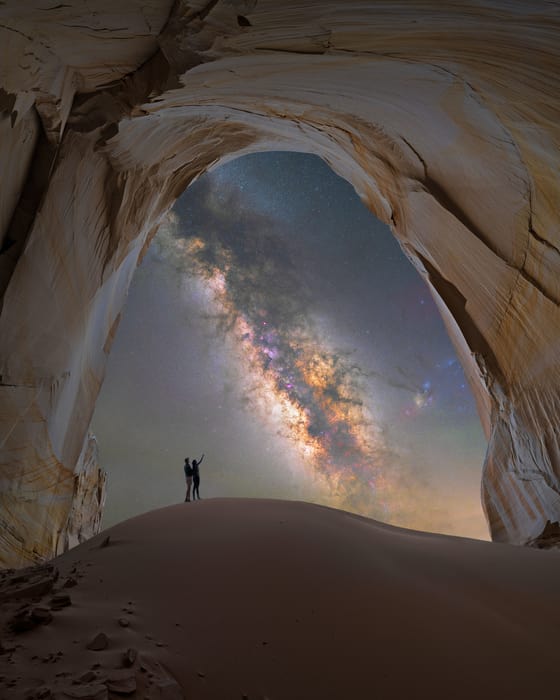
Milky Way getting vertical in the sky towards the end of May – Utah, USA
Also, the position of the Milky Way in the sky changes from season to season, which is critical to planning the best Milky Way compositions and to photographing Milky Way panoramas.
Using the average Northern Hemisphere Milky way season as an example:
- In April and May, the Milky Way will be practically horizontal above the horizon, perfect for panoramas capturing the Milky Way bow.
- In June and July, the Milky Way will be horizontal at a higher elevation in the sky, and it will become more diagonal as the night progresses. This is usually the best time to photograph the Milky Way in different compositions.
- In August and September, the Milky Way will be increasingly vertical, ideal for shots where you want to highlight an element with the Milky Way.

Planning the position of the Milky Way in the sky is key. This image can only be taken during a few days in September when the Milky Way is vertical towards the Southwest – Utah, USA.
Conversely, the position of the Milky Way in the Southern Hemisphere will be different:
- From February to March, the Milky way will be diagonal with the galactic bulge closer to the horizon.
- From April to May, the Milky Way will be diagonal at the beginning of the night, and it’ll be higher in the sky with the galactic bulge moving towards the middle of the sky as the night progresses.
- From June to August, the Milky Way will be diagonal at the beginning of the night, vertical during the middle of the night, and low above the horizon at the end of the night.
- From September to October, the Milky Way will be vertical at the beginning of the night and will decrease in the sky until reaching a horizontal position.
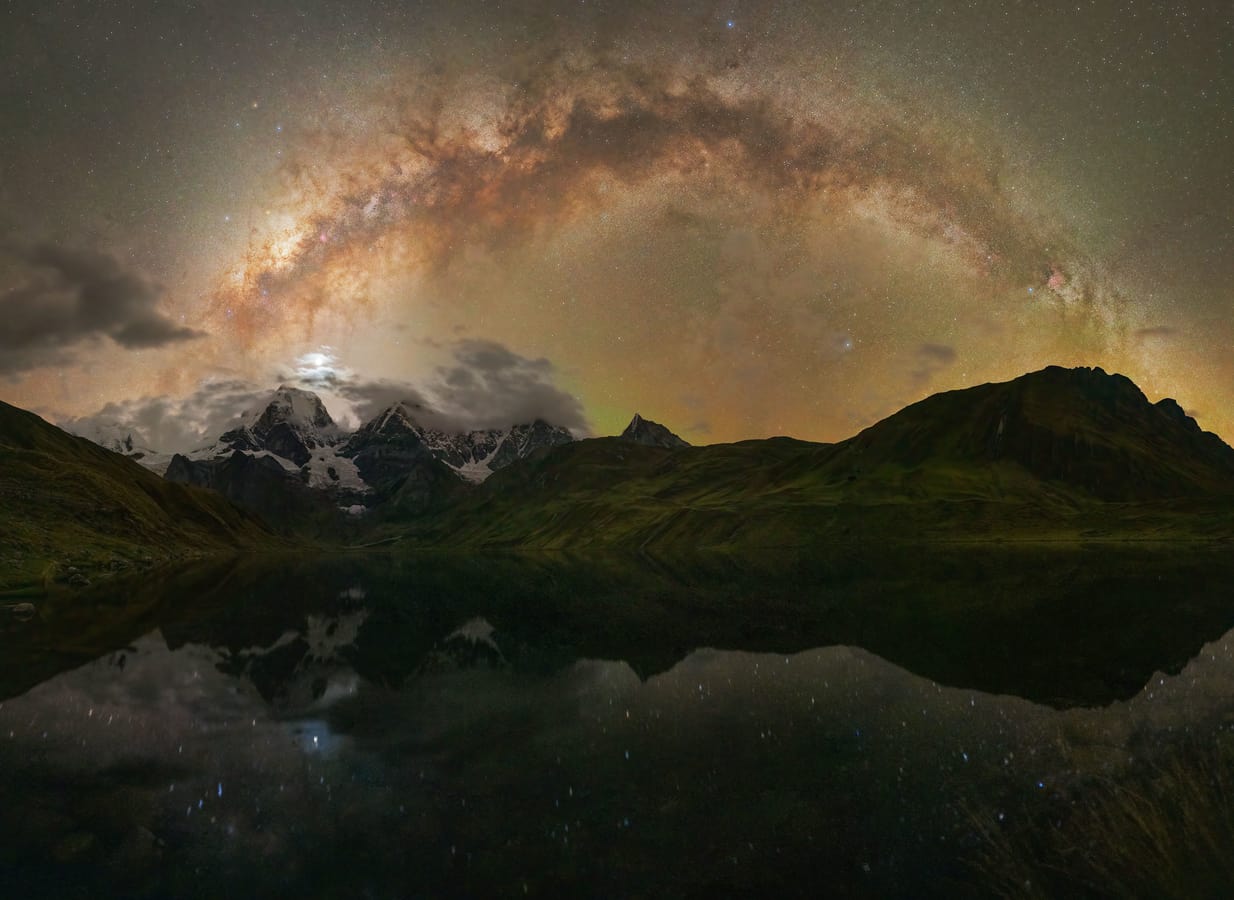
Milky Way arch captured in the Peruvian Andes at the end of the season (late October)
If you are interested in learning and improving your photography, I highly recommend checking my Milky Way photography course as well as our astrophotography workshops & tours!
Conclusion
Seeing our galaxy involves many challenges, but one thing is certain: the key to seeing and photographing the Milky Way, apart from the right technique and Milky Way gear, is great planning.
Once you know the best places to see the Milky Way, knowing when to see the Milky Way is easy, as long as you understand the Milky Way season and how it changes depending on the time of the year and latitude.
You can use many websites and apps to check the Milky Way visibility, moon phases, and the time of the sunrise/sunset.
With these tools, you will be able to check the best time to see the Milky Way in the Northern and Southern Hemispheres according to your location. But if you want to save time during your research, I highly recommend downloading our Milky Way calendars, where you can see at a glance the best time of year to see the Milky Way.
Happy captures and clear skies!
GET THE CALENDAR WITH THE BEST DATES TO PHOTOGRAPH THE MILKY WAY IN 2024
You'll also receive our PDF guide to photographing the Milky Way!

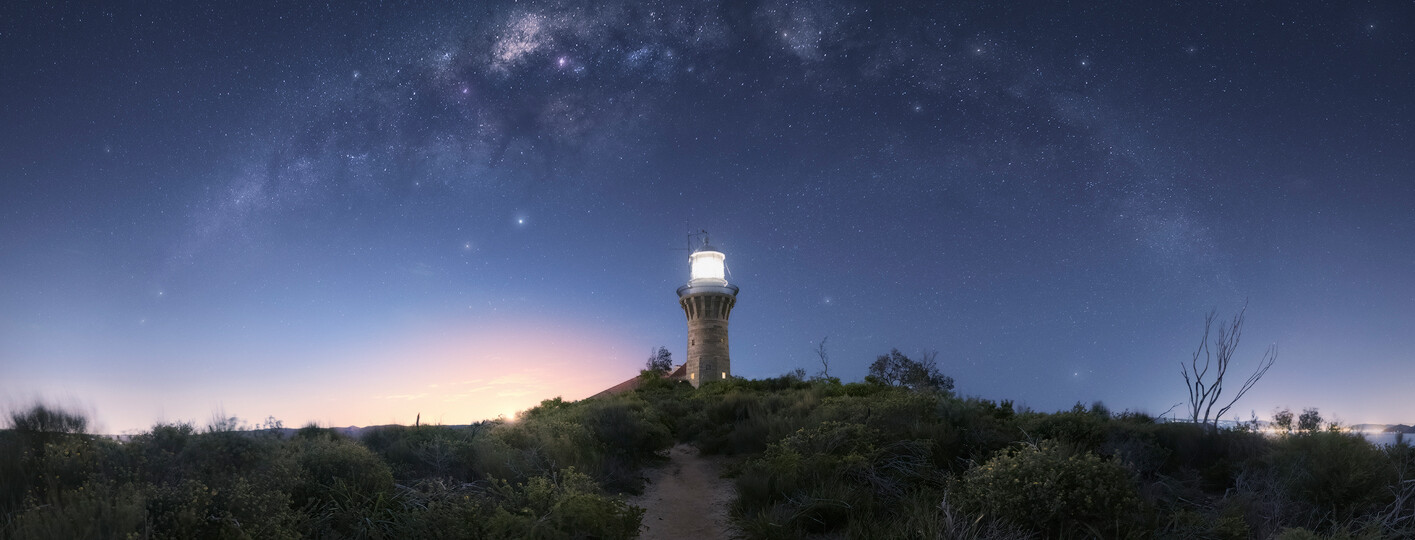
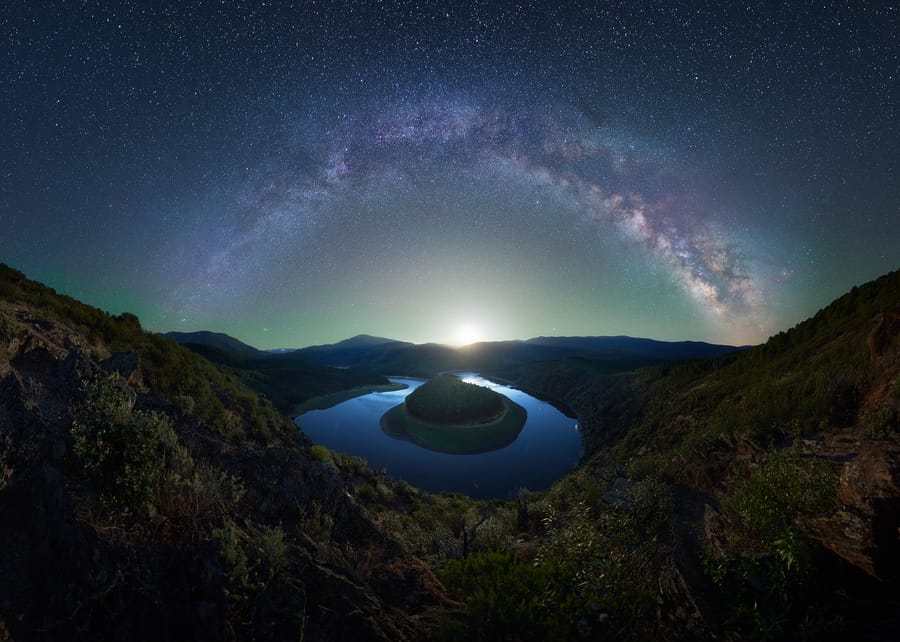
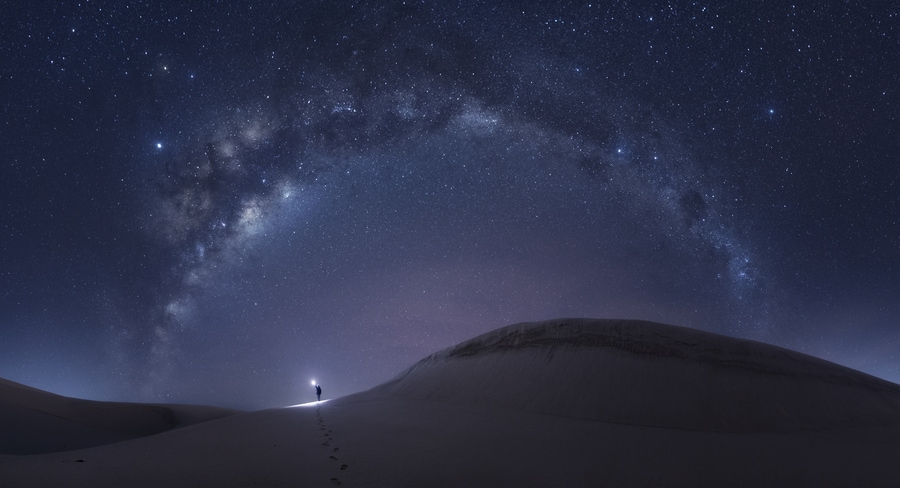
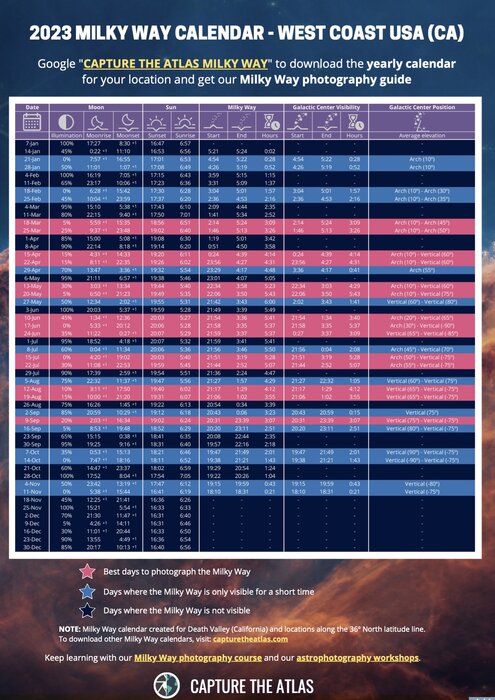



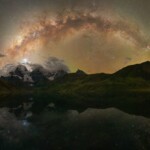



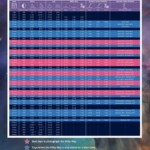
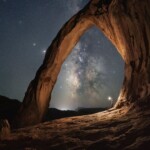
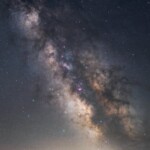

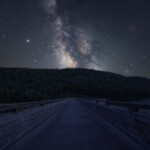

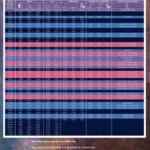
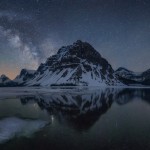
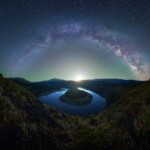

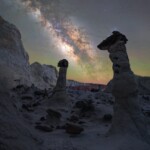
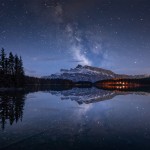
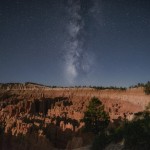
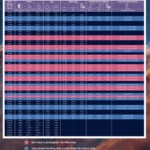
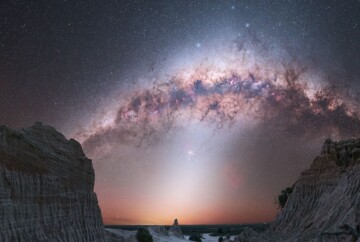
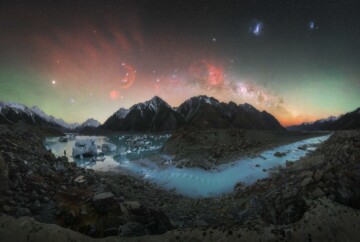
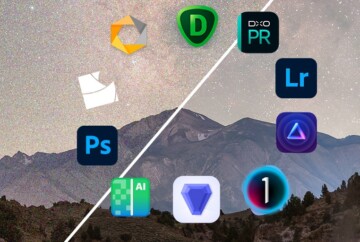








Is the download free? I am learning how to take photo’s of the Milky way and stars. I have a Sony a6500.
Thank you for all the helpful advise!
Lynda,
The download is totally free. You will receive the calendar at your email inbox.
Best,
Dan
Hi Dan:
I see mention of 2023 Milky Way calendars, but I cant’s seem to find them…only 2022 calendars. Are calendars for 2023 available now? Thank you.
Regards,
DJ
DJ,
The 2023 Milky Way Calendars are ready to download 😉
What time zone is used? Is the Texas chart CST, GMT, etc? Thanks for putting this out!
Dave, All Milky Way Calendars are created in local time.
Great content, thank you, just amazingly helpful and comprehensive.
So I have my calendar chart with recommended times, my question is why so specific please? Not on the day, I appreciate we’re going with 1 Saturday per week, 2 days either side. But why when I look at the recommended best hours are they so short? I’m in the UK around 51°. Is the Milky Way really rising and setting that quickly, or what am I missing?
Thanks,
Julian
Julian,
That’s the Milky Way viewing time and it varies according to the location and the time of year. The further North you go, the less hours of visibility of the Milky Way core you’ll have.
Best,
Dan
When will you publish your 2023 Calendar? Guess I could use the dates of your Utah workshop as an assumption those are prime days
for starters?
Jim,
We always release our Milky Way Calendars on the first Sunday of the new year.
You can take the Utah days for April 2023 😉
Hi Dan,
I’m from Iran, can you help me for calendar that use for Iran’s time or Middle East?
I Used Spain and Italy’s calender for capturing Milky Way over National Kavir Park in past years but it’s difficult for me to coordinate foreign calendars with our calendar.
I want to capture Milky Way in this aguest (26th or 27th)
Can you help me?
Many thanks my friend 🙂
Hi Danial,
We don’t have a specific MW Calendar for that location, but you can use the closest calendar to your latitude. We have calendars for 20+ latitudes on Earth, so there’ll be one that you can use for sure 😉
Happy captures and clear skies!
Dan
Thanks for this page, I’ve found it so helpful! I live in the UK and have downloaded your 2022 Milky Way calendar which is based for Snowdonia (53 latitude line) but plan to see the milky way on the 51 latitude line. How much will this affect the reliability of the calendar? Would I need to shift dates by a fixed amount of time? Thanks again!
Steph
Thanks, Steph!
1 or 2 degrees in latitude don’t make a big difference. There’ll be a couple of minutes up or down related to the Milky Way chart, but all the best days and information will be the same 😉
Would love to have a copy of your 2022 calendar (I live in Northwest Arkansas, south-central U.S.) assuming that you will be generating one? Congrats on the beautiful photography! Excellent article, many thanks.
DK
DK,
It will be published the first Sunday of the year. If you’re subscribed to our newsletter, you’ll receive the copy as soon as it’s available!
Thanks,
Dan